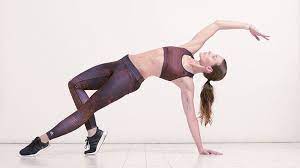When stepping onto the yoga mat, the choice of footwear plays a pivotal role in enhancing your practice. While many practitioners opt for the freedom of barefoot movement, there are several options available to accommodate individual preferences and needs. In this guide, we’ll explore different types of shoes suitable for yoga, helping you make an informed decision that aligns with your practice goals.
What Shoes to Wear to Yoga
When it comes to choosing shoes for yoga, it’s generally recommended to practice yoga barefoot or with minimal footwear. The primary reason for this is to have direct contact with the ground, which helps with stability, balance, and connection during various yoga poses. Here are some options:

- Barefoot: Many yoga practitioners prefer practicing barefoot because it allows for better grip, balance, and natural movement. It also promotes a strong connection between your feet and the yoga mat, enhancing your overall yoga experience.
- Yoga Socks: If you prefer to have a little bit of grip and warmth without full shoes, you could consider wearing yoga socks. These have grippy soles that provide some traction and stability while allowing your toes to move freely.
- Minimalist Footwear: If you feel uncomfortable going barefoot, you can opt for minimalist footwear such as yoga shoes or toe shoes. These are designed to mimic the feeling of being barefoot while still providing a thin layer of protection and grip.
- Yoga Slippers: Yoga slippers are lightweight and flexible footwear options that offer some grip and protection without restricting your foot movement.
- Foot Gloves: Foot gloves, often referred to as “five-toe shoes,” provide individual pockets for each toe and a thin sole for protection. They can offer a barefoot-like experience while still giving you a bit of coverage.
- Sandals or Flip-Flops: If you’re practicing yoga outdoors or in a warm climate, you might consider wearing minimalist sandals or flip-flops to and from your yoga session. However, it’s best to remove them during the actual practice.
It’s important to note that traditional athletic shoes with thick soles and a lot of cushioning are generally not recommended for yoga. These types of shoes can interfere with your ability to balance and properly execute yoga poses, and they may also restrict your foot’s natural movement.
If you’re eager to explore the top choices for yoga footwear, we’ve got you covered. Our guide on the Best Yoga Shoes dives deep into the most recommended options available. Whether you’re seeking ultimate grip, flexibility, or a balance between barefoot feel and support, this guide will help you make an informed decision. These shoes are carefully selected to enhance your practice and provide the comfort you need while performing various poses. Once you’ve learned about the ideal yoga shoes, come back here to continue discovering the different types of footwear that suit your practice
FAQs
Q: What type of shoes are best for yoga?
For yoga practice, it’s recommended to go barefoot or choose minimal footwear. This includes yoga socks, yoga slippers, foot gloves, or even minimalist sandals for transitioning to and from your mat. Thick-soled athletic shoes should be avoided, as they can hinder your balance and natural movement during poses.
Q: Can I practice yoga in regular sneakers?
Regular sneakers with thick soles and cushioning are not recommended for yoga. They can restrict your foot’s movement and stability, which is essential for various yoga poses. It’s better to opt for barefoot practice or choose footwear specifically designed for yoga.
Q: Are yoga socks a good option?
Yes, yoga socks with grippy soles can be a good option for those who prefer a bit of traction and warmth while practicing. They allow your toes to move freely and provide some grip on the mat.
Q: What are yoga slippers?
Yoga slippers are lightweight and flexible footwear designed for yoga practice. They offer a compromise between barefoot feel and foot coverage. Yoga slippers provide grip and protection without limiting your foot’s natural movement.
Q: What are foot gloves or five-toe shoes?
Foot gloves, also known as five-toe shoes, are individual toe pockets with a thin sole, offering a sensation similar to being barefoot. They provide both protection and grip, making them a good choice for those who want to emulate a barefoot experience.
Q: Can I wear flip-flops or sandals to yoga?
While you shouldn’t practice yoga in flip-flops or sandals, they can be convenient for transitioning to and from your yoga session, especially in outdoor or warm-weather settings. Once on the mat, it’s best to practice barefoot or use appropriate yoga footwear.
Q: Why is barefoot practice recommended in yoga?
Barefoot practice in yoga enhances your connection with the ground and improves balance, stability, and natural movement. It allows you to engage the muscles in your feet and promotes a deeper connection with the mat, resulting in better execution of yoga poses.
Q: What should I consider when choosing yoga footwear?
When selecting yoga footwear, consider factors such as grip, comfort, flexibility, and the ability to move your toes freely. The footwear should enhance your practice without hindering your movements or stability during poses.
Q: Is it okay to mix different types of yoga footwear?
Yes, you can experiment with different types of yoga footwear to find what works best for you. Some practitioners might prefer barefoot practice for certain poses and use yoga socks or minimalist footwear for added grip and warmth during others.
Q: How do I know which yoga footwear is right for me?
The best yoga footwear for you depends on your personal preference, comfort, and the style of yoga you practice. Start by trying different options, such as barefoot, yoga socks, slippers, or foot gloves, and see which one aligns with your practice goals and feels most comfortable.